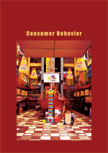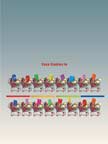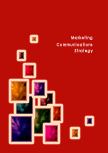Consumers Behavior
 |
Details
Chapter Code: CBC03
Textbook:
210 X 275 mm approx.
Short Case Studies
Detail Table of Contents
Workbook:
Pages : 304; Paperback;
210 X 275 mm approx
Pricing
Textbook Price: Rs. 750;
Workbook Price: Rs. 700;
Shipping & Handling Charges: Rs. 50 per book;
Books Available only in INDIA
Chapter Price : Rs. 100
To download this chapter in electronic format, click on the button below,
and select the chapter from the list of available chapters.
Buy Now
To order the entire book click on the button below, and select the book from
the list of available books:
Please allow 5 to 10 days for delivery of the
Book.
Consumer Behavior : Chapter 3
SUMMARY:
Motivation is what stimulates all human behavior. The process of motivation is initiated by the tension an unsatisfied want creates. An individual makes all possible efforts to reduce that tension. The needs or motives which are at the root of the motivation process are of different types. Physiological needs or primary needs include the need for air, water, food, clothing, shelter and sex, while psychological or secondary needs include the need for affection, status, security, etc. |
|
It is very important for the marketers to know the motives influencing the consumer as they initiate and direct all human behavior (including consumer behavior). Many psychologists such as William McGuire and Henry Murray have tried to list human motives; the motives listed by them are relevant to a marketer in studying consumer behavior as well. While McGuire used a four point model to explain marketers that a consumer is affected by a combination of needs and not a single need, Murray tried to list 27 motives and stated that people have a similar set of needs, however they prioritize them differently.
Theories of motivation also help marketers in understanding how consumers' consumption is influenced by their needs. Abraham Maslow tried to arrange such significant needs into a hierarchy of five levels, depending on the relative importance of the needs to a person. The five levels of needs given by him are 1) physiological needs, 2) safety needs, 3) social needs, 4) egoistic or self esteem needs and finally 5) self actualization needs. The trio of needs (another theory of motivation) deal with three kinds of needs viz., need for power, need for affiliation and need for achievement. These needs play an important role in influencing consumer behavior. Motivational conflict is a concept which deals with the conflicting motives of the customers. Here the marketer tries to project the product as a solution to such conflicts.
With motivation being such a major influence on consumption pattern of the customer, there is a strong need to study it as part of marketing research. Qualitative techniques of observation, focus groups and in-depth interview and analysis are used to understand the latent motives of a consumer. The level of involvement (how interested the consumer was about a product) determines the degree of motivation a consumer had to buy that product. The source of stimulation and the particular situation the consumer is in when he or she comes into contact with the product also determine the level of involvement.
It could vary in degree, i.e. the customer's involvement could be at the basic stage (it could be passive or low); on the other hand involvement could be active or high. The marketer has to understand how interested his consumer is and accordingly formulate strategies and advertising. To conclude, the marketer who understands the various needs that motivate a consumer in purchasing a product or service and is able to design and showcase his products accordingly will be successful.
Big marketers, at times, may also employ a full market coverage strategy, which may further be differentiated (different marketing mix for different products) or undifferentiated (single marketing mix for all products). Sometimes marketers adopt too many micro segments, which later become redundant. In such a case, all segments are clubbed together with a single marketing mix (counter segmentation).



